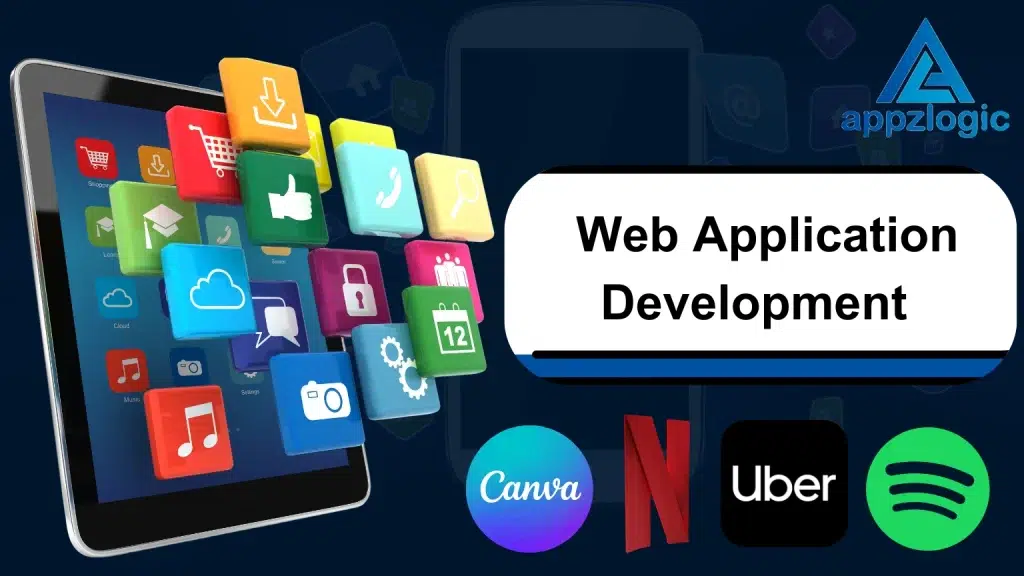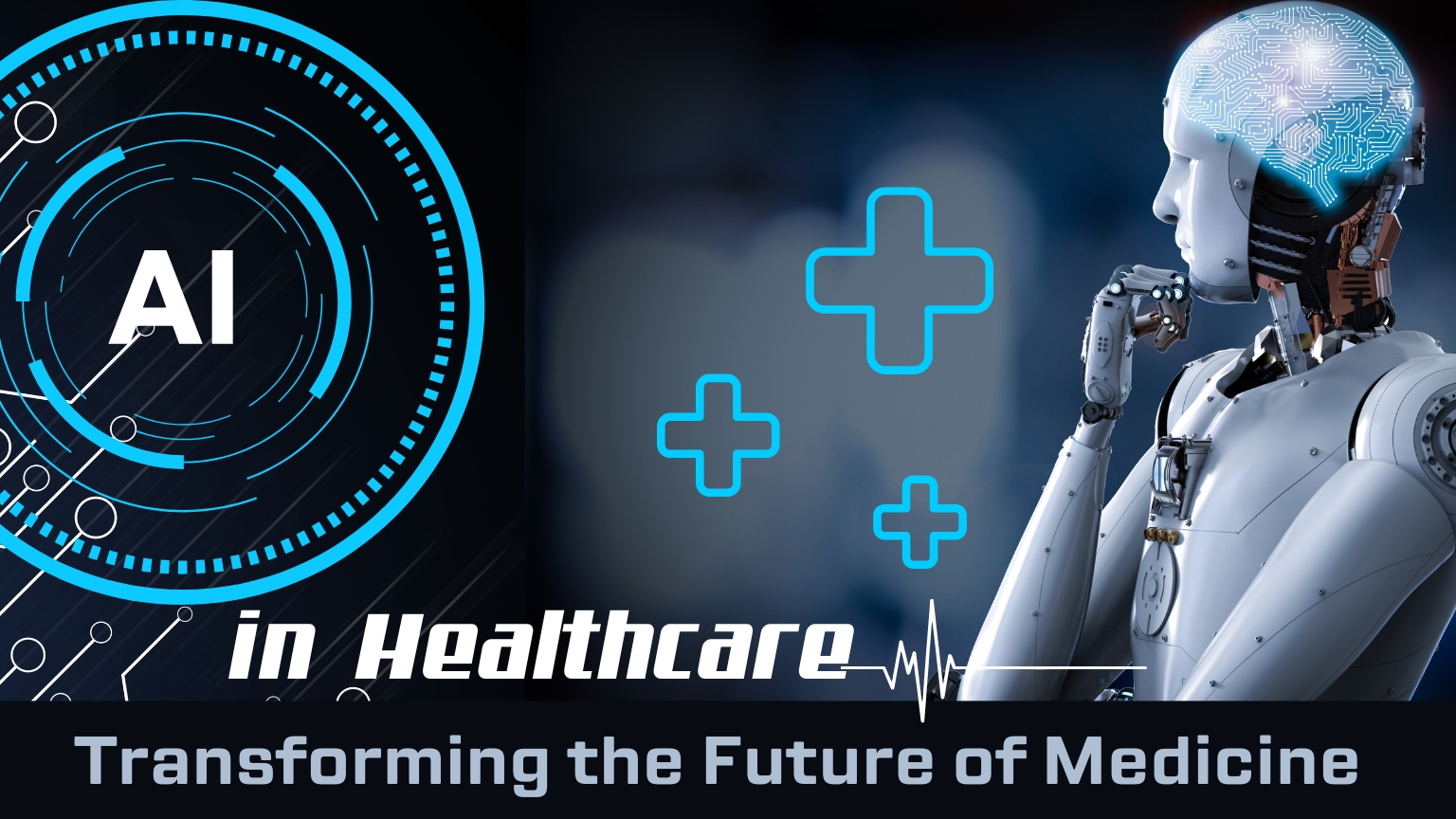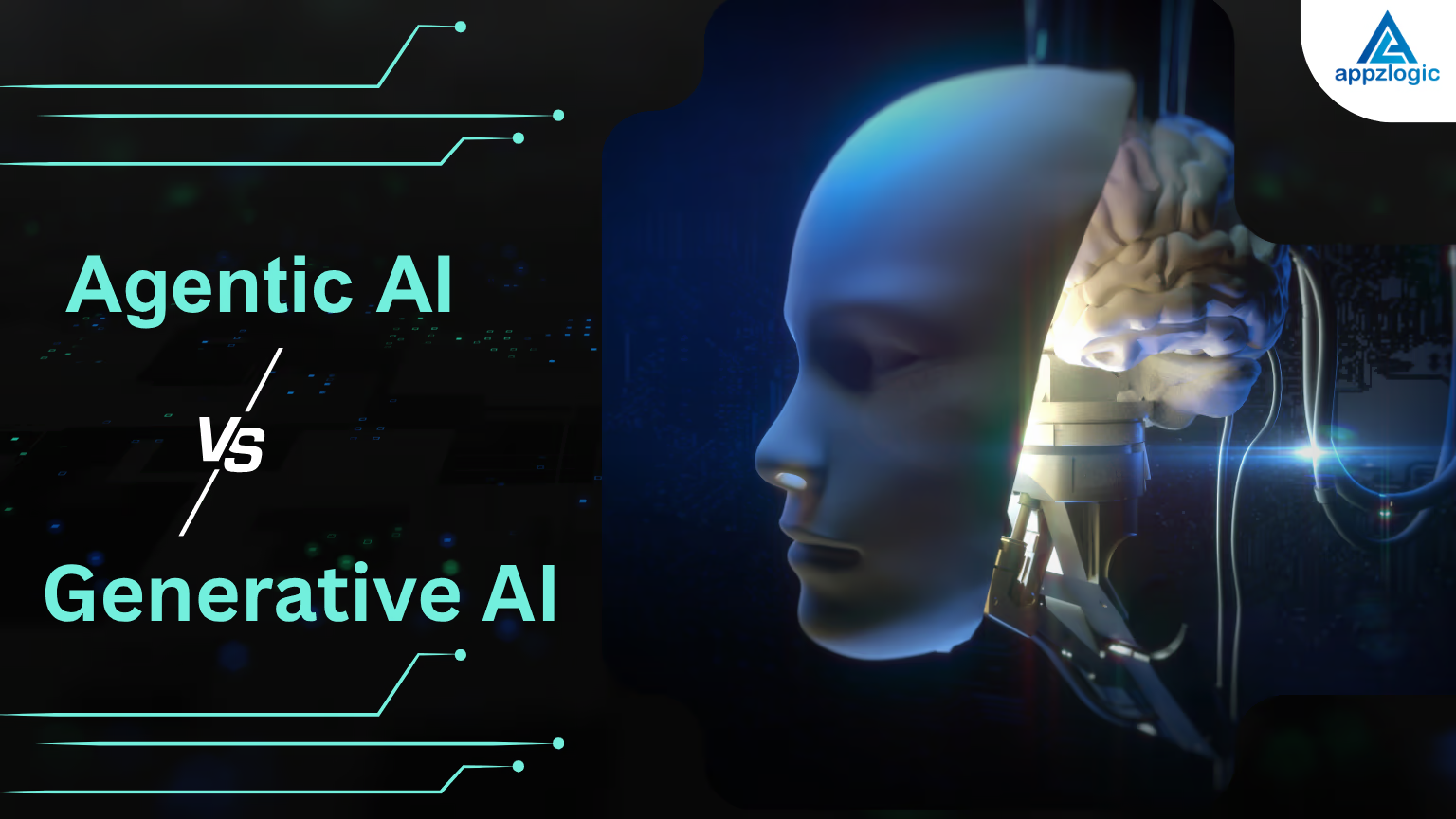
Web Application Development
Web Application Development is a foundation of the modern digital landscape, offering businesses and individuals the tools they need to connect, communicate, and create in an increasingly online world. Unlike traditional desktop applications, web applications are accessed through a web browser, making them more flexible and accessible to users regardless of their operating system or device. This flexibility has driven the growing popularity of web applications in recent years, particularly as mobile devices have become portable.
Web Application Development Process
The process of web application development involves several distinct stages, each critical to the success of the final product.
Where there is a need, there is an app. Today apps have become the backbone of innovation, seamlessly integrating into our daily lives. From ordering food to managing finances, there is an app for almost everything.
- Discovery and Planning: It begins with the discovery and planning phase, during which developers and stakeholders define the application’s purpose, target audience, and key features. This phase lays the groundwork for the design and functionality of the application.
- Design Stage: Once the scope is established, developers move on to the design stage, where they create wireframes and mockups to visualize the user interface and user experience. These visual prototypes help ensure that the application is intuitive and aligns with user expectations.
- Coding the Application: This process involves front-end and back-end development. The front-end, built with HTML, CSS, JavaScript, and frameworks like React, Angular, or Vue.js, handles user interactions. The back end, using technologies like Node.js, Python, or PHP, manages server-side logic, databases, and APIs, ensuring seamless data flow, security, and smooth performance.
- Testing: Testing includes functionality testing, which ensures that all features work as intended, as well as performance testing to assess how the application handles different levels of user activity. Security testing is another critical component, particularly given the rise in cyber threats. Developers must ensure that user data is protected, and that the application is resilient against potential attacks.
- Deployment: Once the application has been thoroughly tested, it is ready for deployment. This process involves making the application available to users, typically through a web server or cloud-based platform. Even after the application is live, the development process is not over. Serverless architecture simplifies deployment by allowing developers to focus on code without worrying about server management. AI technologies, meanwhile, enable features like chatbots, personalized recommendations, and advanced data analytics, enriching the user experience.
Types Of Web Based Applications
Web Application Development Software
Web application development software refers to tools and platforms that facilitate the creation, deployment, and maintenance of web applications. These solutions provide developers with frameworks, libraries, and integrated development environments (IDEs) to streamline coding and ensure scalability, security, and performance. Popular tools include Visual Studio Code, Eclipse, and JetBrains IntelliJ IDEA for coding, while frameworks like React, Angular, Django, and Laravel simplify front-end and back-end development. Laravel stands out for its elegant syntax, MVC architecture, Eloquent ORM, and built-in security features, making it ideal for scalable applications. Cloud platforms like AWS, Azure, and Google Cloud further enhance hosting and scalability.
- Static Web Applications: Static web applications are among the earliest types of web apps available online. These are crafted using basic technologies like HTML and CSS to present essential content and information. They are straightforward and primarily focus on displaying fixed content with minimal interactivity. Personalization options are almost non-existent, and updates can only be made after modifying and re-uploading the HTML files. While static apps can include visual elements like GIFs and videos, updating their content often involves technical processes such as downloading, editing, and re-uploading the source code. Such applications are best suited for showcasing portfolios, digital resumes, or simple marketing pages like lead capture forms.
- Dynamic Web Applications: Dynamic web applications deliver content and features that respond to user interactions in real-time. Unlike static web apps, they are more technically advanced and allow for extensive interactivity. These apps rely on databases to manage and display content, enabling seamless updates and real-time responses. Typically, dynamic web apps feature an admin panel to manage both the front-end and back-end. Administrators can use this panel to edit content and incorporate interactive elements. Popular programming languages like PHP and ASP.NET are often used to develop dynamic web applications, which are well-suited for organizations aiming to offer a more engaging and personalized experience.
- E-commerce Web Applications: E-commerce web applications serve as platforms for businesses to sell products or services online. They operate similarly to online stores, offering features such as product catalogs, payment processing, and inventory management. These apps also support electronic transactions, making shopping convenient for users. A robust management panel is essential for handling tasks like adding or removing products and monitoring sales. Customization plays a vital role in making e-commerce web apps user-friendly and tailored to a brand’s needs. Prominent examples include Amazon, Flipkart, and Ajio.
- Single-Page Web Applications (SPAs): Single-Page Applications (SPAs) are dynamic web apps designed to function without requiring frequent page reloads. SPAs deliver a seamless and fast user experience by handling all operations on the client-side browser. Their implementation is straightforward, making development quicker and more efficient. Popular examples of SPAs include Gmail, Twitter X, and Netflix.
- Portal Web Applications: Portal web applications provide a centralized access point to various data and features for specific users. They are designed to cater to targeted audiences, offering customized interfaces that align with their requirements. These apps often require users to register and log in, allowing service providers to monitor user activities and tailor services accordingly. Portal web apps are widely used by organizations to create personalized experiences, making them ideal for businesses that aim to offer specialized services.
- Laravel web application Development: Laravel is a popular PHP framework designed for efficient and robust web application development. Known for its elegant syntax and powerful features, Laravel simplifies complex tasks like routing, authentication, and database management. It supports MVC architecture, ensuring a clear separation between business logic and presentation layers, making applications easy to maintain and scale. With built-in tools like Eloquent ORM, Blade templating engine, and extensive libraries, developers can build dynamic and feature-rich applications quickly. Its focus on security, scalability, and performance makes Laravel ideal for developing everything from small websites to complex enterprise-level applications, ensuring a seamless user experience.
- Enterprise web application development services: It focuses on creating robust, scalable, and secure solutions tailored to meet the unique needs of businesses. These services include designing custom applications, integrating advanced technologies like AI and Cloud Computing, and optimizing user experiences across platforms. Enterprise-grade applications enhance operational efficiency, streamline workflows, and support data-driven decision-making. By leveraging modern frameworks and development methodologies, these services ensure seamless scalability and reliability to handle high traffic and complex processes. Additionally, strong emphasis is placed on data security, compliance, and performance optimization, making enterprise web applications a cornerstone for driving digital transformation and achieving business growth.
Mobile Web Application Development
This involves creating responsive and user-friendly web applications optimized for mobile devices. These applications provide seamless access across various platforms and browsers without requiring installation. Developers use modern technologies like HTML5, CSS3, and JavaScript frameworks such as React or Angular to ensure high performance and engaging interfaces. Mobile web apps are cost-effective, easier to maintain, and can quickly reach a broader audience. They support features like offline access, push notifications, and adaptive layouts to enhance user experiences. By focusing on scalability and speed, mobile web application development empowers businesses to deliver dynamic, on-the-go solutions for their users.
The Future of Web Development Apps
The future of web apps is bright and evolving with new technologies and approaches making them more powerful and user-friendly.
Some key trends shaping the future of web applications include
- Progressive Web Apps (PWAs): PWAs combine the best features of native mobile apps and web apps. They offer offline functionality, faster load times, and push notifications while still being accessible via a browser. PWAs are likely to continue growing in popularity.
- Single Page Applications (SPAs): SPAs allow for faster navigation and a smoother user experience. Technologies like React, Angular, and Vue.js are making SPAs more accessible and widely used, and they are expected to dominate web development.
- AI and Machine Learning Integration: Web apps are increasingly incorporating AI and machine learning for personalized experiences, smarter chatbots, predictive analytics, and more. This trend will continue to grow as these technologies mature.
- Voice Integration: With the rise of voice assistants like Alexa, Google Assistant, and Siri, web apps will increasingly integrate voice commands and controls for hands-free navigation and interactions.
- Better Security: As web applications handle more sensitive data, security will become even more critical. Web apps will see continued innovations in encryption, authentication, and anti-fraud measures to protect user privacy.
- Cloud-based Applications: Web apps are expected to move further into the cloud, offering more scalable, collaborative, and efficient tools for businesses and individuals alike. Cloud computing allows for more flexibility and ease of use for both developers and users.
- Serverless Architecture: Web apps will continue to embrace serverless computing, reducing the need for developers to manage servers, resulting in lower costs and faster deployment.
- AR/VR Integration: Augmented Reality (AR) and Virtual Reality (VR) are becoming more integrated into web apps, especially in fields like E-Commerce, Education, and Healthcare offering interactive and immersive user experiences.
Advantages Of Web Development Apps
- Accessibility: Web apps can be accessed on any device with a web browser, which makes them platform independent. Users do not need to download or install anything, making it convenient for cross-platform use.
- Lower Development Cost: Web apps are generally cheaper to develop and maintain than native mobile apps, as they can be used across various platforms without needing different versions for iOS, Android, etc.
- Automatic Updates: With web apps, updates are rolled out on the server side, so users always access the latest version without needing to download or install anything manually.
- Easier Collaboration: Many web apps like Google Workspace, Trello etc. are designed for collaborative work. They allow multiple users to access and work on the same document or project simultaneously.
- Improved Compatibility: Web apps are typically compatible with most modern browsers, making them more versatile than desktop applications that might require specific operating systems or hardware.
- Cross-Platform Functionality: A single web app can be designed to work across multiple devices and operating systems, reducing the need for development of separate applications for different platforms.
- Scalability: Web apps can be easily scaled to handle more users or increased traffic without major changes to the infrastructure.
- Security: Web apps can be more secure because they store data on a central server, making it easier to implement security protocols like HTTPS, encryption, and regular backups.
- Cost Efficiency: Because web apps don’t need to be installed on individual devices and updates are managed remotely, they are more cost-effective in terms of user acquisition, maintenance, and deployment.
- Offline Capability (with PWAs): Progressive Web Apps can function offline, enabling users to continue using the app even without an internet connection, improving reliability.
Challenges While Developing Web Application
Web application development is full of challenges. Developers must navigate issues such as cross-browser compatibility, scalability, and user accessibility. Ensuring that an application works seamlessly across different devices and browsers requires meticulous testing and optimization.
Scalability is another critical concern, particularly for applications that anticipate significant user growth. Developers must design systems that can handle increased demand without sacrificing performance.
Accessibility is an essential aspect, as developers strive to create applications that are usable by individuals with disabilities, adhering to standards like the Web Content Accessibility Guidelines (WCAG).
Despite these challenges, web application development offers immense opportunities for innovation and impact. From e-commerce platforms and social media networks to productivity tools and entertainment services, web applications have transformed the way people live and work.
Why Choose Appzlogic for Web Application Development Services Include?
- Custom Web Development: We design and develop web applications that are perfectly aligned with your business goals, ensuring a seamless user experience and robust functionality.
- Frontend Development: Our team utilizes modern frameworks like Angular, React, and Vue.js to build responsive, engaging, and intuitive user interfaces that make your applications stand out.
- Backend Development: We leverage powerful technologies such as Node.js, Java, and PHP to build secure, high-performance server-side applications that handle complex business logic with ease.
- E-commerce Solutions: We offer tailored e-commerce platforms that are optimized for performance, security, and scalability to help you capture and retain customers effectively.
- Web Automation Services: We implement web automation solutions to improve workflows, reduce operational costs, and enhance overall productivity.
- API Development & Integration: We ensure seamless integration of your web applications with third-party services and APIs, enabling smoother data exchanges and enhanced functionality.
- Cloud-Based Solutions: Whether you’re looking to migrate your app to the cloud or develop cloud-native applications, we ensure seamless scalability and high availability.
- UI/UX Design: Our design team creates aesthetically pleasing and user-centric interfaces that are easy to navigate and boost user engagement.
- Maintenance & Support: We offer ongoing support and maintenance services to ensure your application stays up-to-date, secure, and optimized.
Partnering with Appzlogic empowers businesses to harness the full potential of web application development.
Contact Appzlogic today to discover more about our web application solutions.
Frequently Asked Questions
A software accessed through a web browser that runs on a server.
HTML, CSS, JavaScript for frontend; Python, Java, PHP, Node.js for backend and databases like MySQL or MongoDB.
Enterprise web application development refers to the process of creating web-based software solutions designed to meet their specific needs.
APIs (Application Programming Interfaces) allow the web app to communicate with external services or other parts of the application, such as databases or third-party services.
Web App Development costs range from a few thousand to lakhs, depending on complexity and features.




